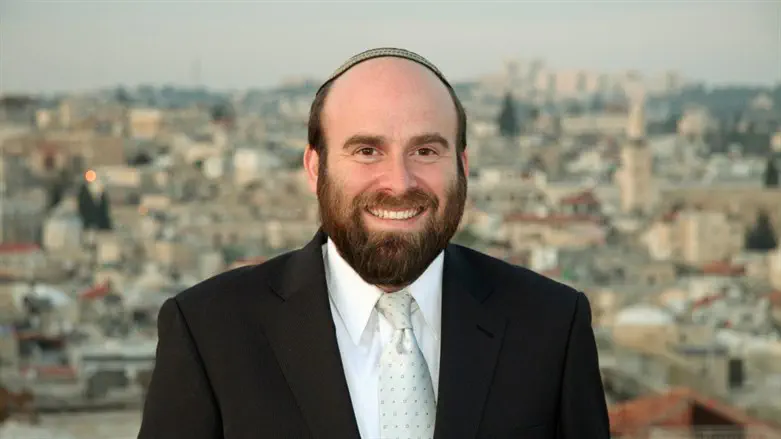
The Context
We had been enslaved in Egypt for over two hundred years with no end in sight. Moshe’s call to free us had just backfired. Pharaoh responded to it by intensifying our labor conditions. He would no longer provide us with the straw needed to produce bricks. We would have to find our own while still meeting the same daily quota of bricks. The Jewish officers complained to Moshe, who complained to Hashem. Hashem then responded that Moshe would “now” see what He would do to Pharaoh.
But first, in Parshat Va’era, Hashem tried to reinspire the Jewish People. They had lost hope, and Hashem aimed to restore it through the “four phrases of redemption.” Interestingly, Hashem formulated each of these phrases in the past tense (and used an opening vav to flip them to the future tense). Why did Hashem use this past-tense formulation?
Also, why did Hashem think these phrases would evoke renewed hope? Hashem had already promised the Jews redemption in Parshat Shemot, and they had shown faith. But Moshe’s attempt backfired, and they became disillusioned. Why did Hashem think new promises would make a difference?
The New Name
The answer lies in the opening words of Parshat Va’era. Hashem begins the parsha by introducing Himself with the Tetragrammaton (His four-letter name, YKVK). Hashem tells Moshe to present Him to the Jewish People this way — as the first and last words of his speech to them. Why was the Tetragrammaton so important at this point in Jewish history?
Additionally, Hashem added that the Avot had not known Him by this name. How could Hashem say this when He had often used it in conversations with them?
The answer lies in a greater appreciation of the significance of the Tetragrammaton. Rashi explains that the name implies Hashem's reliability in rewarding His followers. It signifies not just divine justice but a personal, enduring relationship — one that assures both commitment and follow-through.
Though Hashem had revealed the Tetragrammaton to the Avot when He made promises about their future, they had not seen them fulfilled. They fully believed that Hashem would fulfill His promises, yet because they had not yet experienced it firsthand, they could not appreciate the full significance of this special name.
This was the experience the Avot lacked, but their descendants would come to know. The Jewish People in Egypt had the history of Hashem’s interactions with the Avot to build upon. He had fulfilled His promise to give the Avot the land of Israel, and they had successfully inhabited it. The Jews in Egypt should have been able to use Hashem’s fulfillment of His promises to the Avot to bolster their faith in the promises He made to them.
What’s In The Name
The question remains as to why the Tetragrammaton connotes faith in Hashem’s fulfillment of promises. Why does this specific name have that connotation?
The answer lies in the etymology of the Tetragrammaton. The Tur explains that the name combines the Hebrew words for past, present, and future (היה, הוה, יהיה). It thus signifies Hashem’s constant and consistent presence throughout the ages. From His perspective, there is no difference between the future and the past. The former already exists in the latter. Though we only see the fulfillment of Hashem’s promises in the future, in truth, from Hashem’s perspective, they’ve already been fulfilled.
This explains why Hashem formulated the four phrases of redemption in the past tense. From His perspective, the promises were already reality.
Hashem opens Parshat Va’era by presenting Himself through the Tetragrammaton and challenging the Jewish nation to view His promises — like His eternal presence — not as distant events but as already real. This call to draw on the past to shape our vision of the future is a powerful source of strength, reminding us that history itself can be a guide.
After the Exodus
Sadly, Hashem’s words failed to inspire the Jewish People. They suffered from “hard work and short spirits.” Their present challenges kept them from “hearing” Hashem’s promises of their bright future. When Moshe relayed Hashem’s words, they fell on deaf ears.
Though they could not “hear” Moshe’s words, later generations did. These generations found strength not only in the fulfillment of the promises to the Avot, but also in the fulfillment of those made to their descendants — in Egypt, in the desert, and then finally in Eretz Yisrael.
Our people’s history, a rich tapestry of triumphs and challenges, should give us the strength to face our current challenges — and the confidence to believe in our future. The Semak saw this as the intention of Hashem’s first commandment at Sinai, “I am Hashem, your G-d, who took you out from the land of Egypt." This commandment is not just a statement but a call to action, empowering us to use the Exodus to strengthen our faith in future redemption.
In difficult times, we must remember that while our challenges may feel overwhelming, they are small compared to those Hashem has already helped us overcome.
The great miracle of the ingathering of the Jewish People into Eretz Yisrael and the flourishing of the state of Israel should give us even more reason to be confident about our future. Though we face ongoing challenges, as we live the dream of our ancestors in Israel, we know we are beneficiaries of G-d’s grace.
Rav Reuven Taragin is the Dean of Overseas Students at Yeshivat Hakotel and the Educational Director of World Mizrachi and the RZA. His new book, Essentials of Judaism, can be purchased at rabbireuventaragin.com.